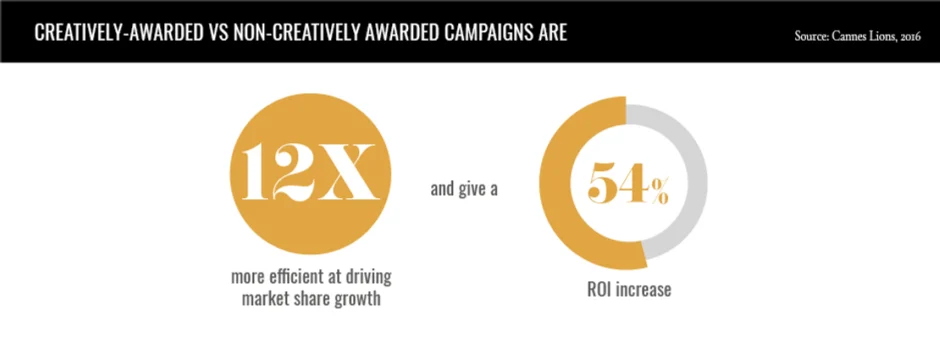Words by Saskia Pronk
‘Safe’ advertising takes a backseat in the first session at Cannes Lions 2018, with creativity and digital now riding shotgun. Pharmaceutical companies, as science-based organisations, are adept in demonstrating the efficacy of their products through incredible results and data. But amid the digital and data revolution, the rise of social media, and increasing consumer expectations, companies must realise that science can’t solely be relied upon.
Instead, pharma marketers need to embrace change and utilise their creative bravery to transform and redefine models of brand building – focussing on empathetic and purposeful content which provokes consumers in both thought and emotion. Carlton Lawson, Head of Global Categories, GSK, explains: “Efficacy can be successful, but it lacks empathy and a purpose”, and reflecting on previous efficacy-based campaigns, he critiques: “We lacked true insight; we looked at physiological observations not human truths.”
Traditionally, ‘brand love’ is something pharma have striven for; however, contrary to popular belief, love doesn’t drive consumer choices. After all, nobody loves decongestants or antacids. The crux of the matter instead lies with trust and empathy, “People have faith that the brand is quality, effective, and trust the people behind it to understand their needs”, expands Lawson.
Therefore, a powerful brand purpose should be one which people can identify with and find great interest in. For instance, the ‘emotional nutrition’ Horlicks campaign by GSK aims to help students deal with exam pressure in Kota, India, an area with high suicide rates. Discussing this thought-provoking and tear-jerking campaign, Lawson expounds: “The insight here is that the fear of the exams constrains students’ ability to produce good work. Horlicks can help by ensuring children are nourished so they can concentrate and prepare properly.”
Pharma marketers need to embrace change and utilise their creative bravery to transform and redefine models of brand building
This new level of engagement and creative standard can be applied across the industry. In the field of oncology, Eli Lilly is exploring the tension between creative desire and the responsibilities pharma have to their target audience. In this case, empowering the voices of people living with metastatic cancer and communicating their truth. “When you’re in this space, you have an accountability to preserve and treasure that truth”, notes Amy Meadows, Senior Advisor, Consumer Marketing, Eli Lilly, adding: “That is one thing, when you have stage 4 cancer; this cancer is eventually going to win, and this person will take their last breath. What we realised is, if you want to fight for that truth, you need to be really comfortable with being uncomfortable.”
For Lartruvo, a rare cancer drug used to treat soft-tissue sarcoma (STS), Lilly’s digital and patient-education campaign is based on the determination of patients. During discussions, one particular young woman affected by STS declares: “Although dealing with the disease is tough, tell me to get up, because lying in bed is a waste of time.” At Cannes, as a result of such patient interactions, Lilly reveal a prototype of a custom alarm clock they made for STS patients. It’s preprogrammed by the patient’s loved ones to project photos and messages onto the ceiling to inspire patients to get up out of bed.
This shift from traditionalism also needs to happen in a digital marketing sense. With the e-commerce market set to contribute to half of industry growth over the next 5 years, where is the value in creatively building brands just for them to be unavailable and inaccessible to the consumer?
Contrary to popular belief, love doesn’t drive consumer choices
Companies need to encourage a safe space where employees can learn digital and let their innovation and creativity prosper without fear of failure. Without this, Lawson experienced the results firsthand: “Marketers were spending digital budgets mainly on display and banner advertising which delivers the lowest ROI, and the reason for that was no one knew how to do it, we didn’t create a safe environment to learn digital.”
To address and prevent this, companies need to create ways to realign their marketing related teams such as data, analytics, and e-commerce as opposed to having talented individuals working in silos. Marc Speichert, Chief Digital Officer, GSK, created this in the form of a ‘marketing services function’, explaining: “We brought teams from across the business together, starting with data insights and analytics at the very core of it, and all the way through to digital innovation.”
Speichert believes that redefining digital innovation needs a fluid approach. As an example, he highlights the development of ‘digiceuticals’, saying: “For pain management, data shows putting people through VR experience is more efficient than taking a pill itself.” Therefore, what does this mean from a pipeline perspective considering GSK’s position as a world-leader in OTC pain relief? This year, Speichert’s team completed the creation of a digital innovation hub, partnering with colleagues in R&D and IT to ringfence resources and define just that. This reiterates the reality that the industry is not a static environment, but creative brand and digital transformation is essential, because as Speichert warns: “What’s around the corner could be quite disruptive.”







